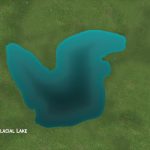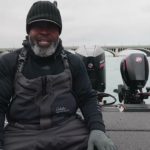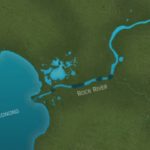Fired-Up for Fall Walleyes
Right now rivers are full of hungry and aggressive walleyes migrating towards their spring hangouts. This is an awesome time of year to catch some great fish! These walleyes are on the prowl, feeding and moving on instead of setting up in a particular place.
The key to getting bit is to intercept them in spots on their migration route that offer feeding opportunities, such as channel edges. Walleyes will use them as both rest stops and feeding stations. Incoming creeks are also spots to hone in on, as they will form a delta or hump where they connect to the main channel. Other places to check are wing dams and outside bends in the channel that create wash-outs and eddies, which also hold walleyes.
In small isolated spots, like a hole on an outside bend or the wash out area of a wing dam, vertical jigging is the tactic of choice. Since water levels are typically low this time of year, the current will most likely be light and you will probably be jigging somewhere between ten and twenty feet deep.
Begin jigging more aggressively than you would in the spring with a 1/8 to 3/8-ounce jig. Don’t be afraid to let your jig rest on bottom, as many times the walleye will suck it right in! This is an ideal situation for using a semi-stand-up style jig, like the Bass Pro Shops XPS Walleye Angler Jig. The jig will sit on the bottom of the river at an angle that is easy for the walleye to gobble up! A large artificial tail, such as the four-inch Berkley GULP! Minnow or a four-inch Berkley PowerBait Ripple Shad are great ways to attract fish to your jig!
If the fish are in transition, they will be found in “classic” holding spots as they move upstream. To target these fish that are going to be holding along channel structure, you will want to troll crankbaits near bottom.
Some fish may be cruising near the top of the break, while others may be closer to bottom. Trolling lead core line is an effective way to cover the depths to find where the fish are. Once you let a set amount of line out, you can control the depth it runs by speeding up and slowing down. The faster you troll, the higher the lure will run.
If you are in a very low water situation, where there is hardly any current, you will want to cover water methodically to get results by Jig Trolling. This is done by moving slowly along a channel edge with your MotorGuide Xi5 bow mount trolling motor while working a 3/8 to 1/2-ounce jig. The jig should be trailed at a 45-degree angle from the rod tip. This method allows you to cover more ground than vertical jigging, but with more finesse than trolling cranks.





